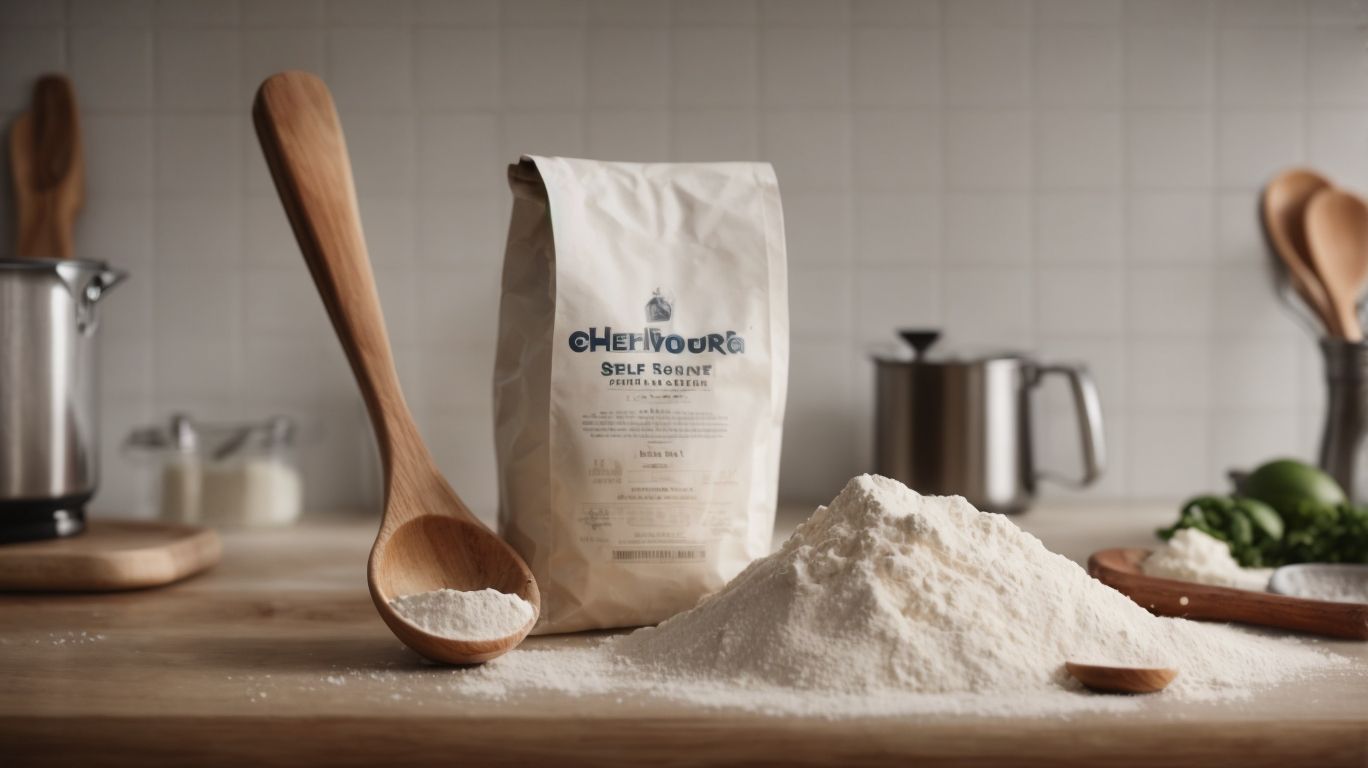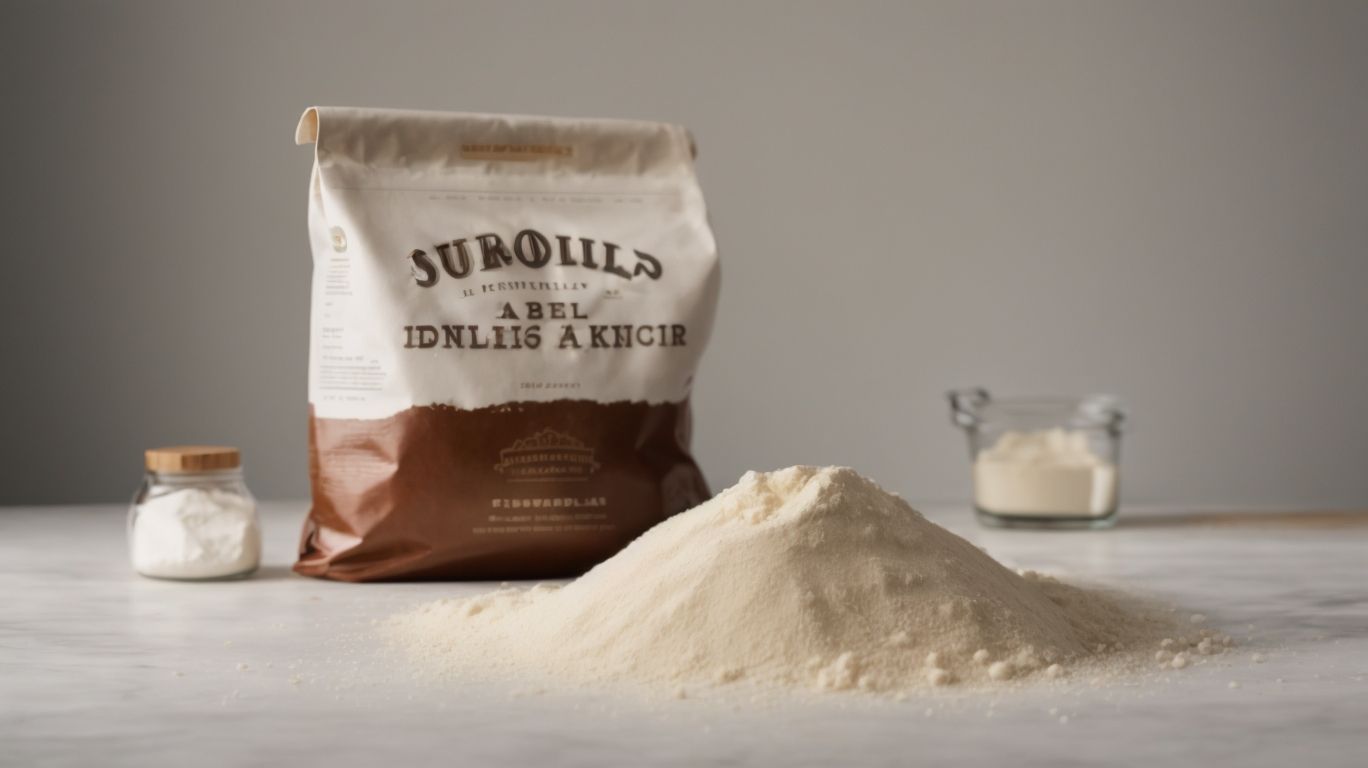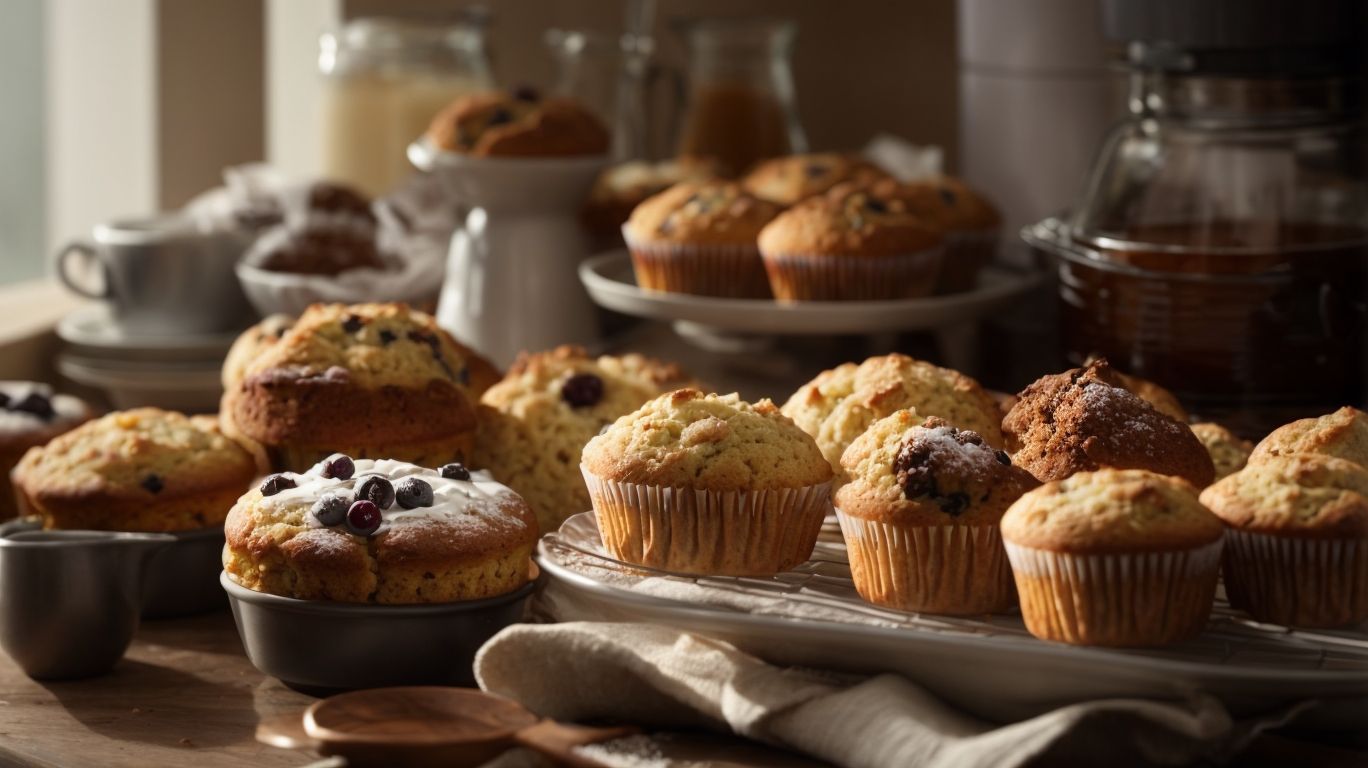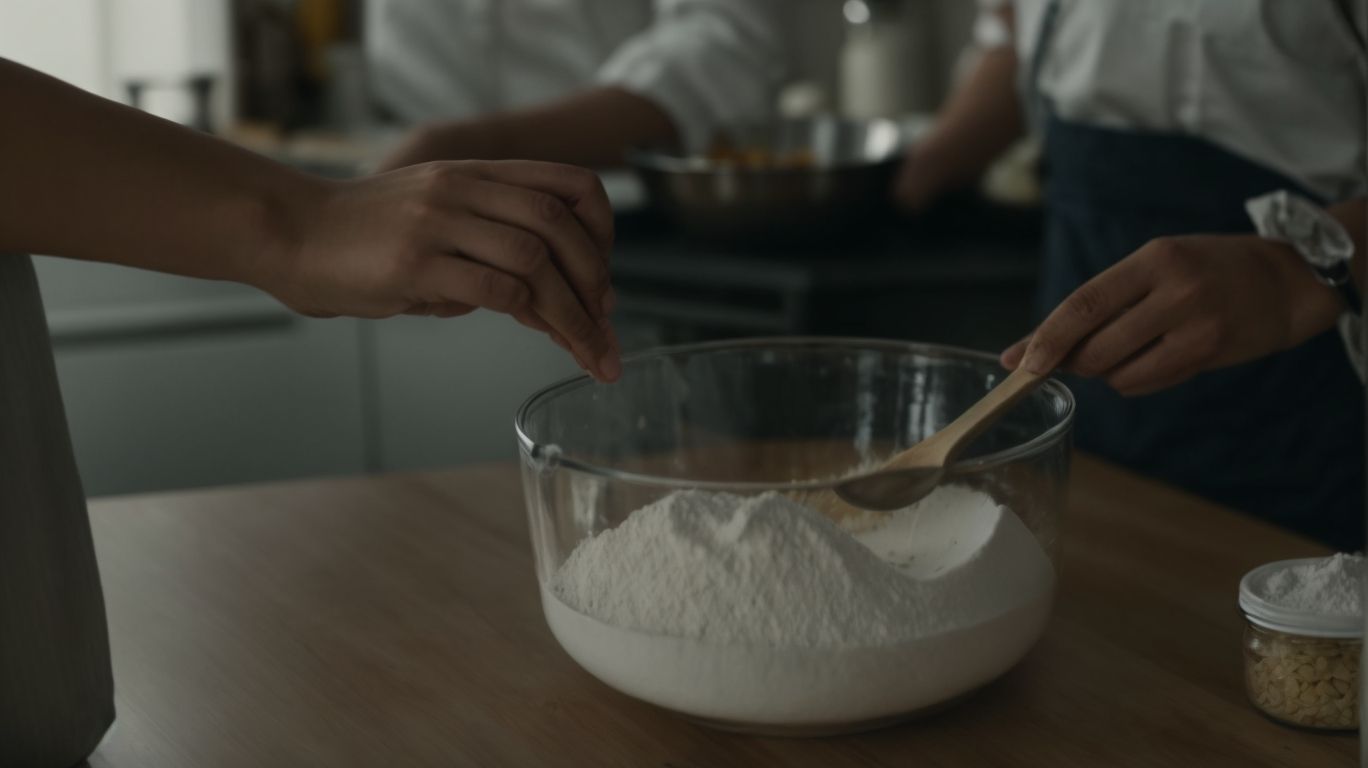How to Bake With Self Raising Flour?
Have you ever wondered what exactly self raising flour is and how it differs from other types of flour?
In this article, we will explore the ins and outs of self raising flour, including how it compares to all-purpose flour and cake flour.
Learn how to make self raising flour at home and get essential tips for baking with it. Discover the common baked goods that can be made using self raising flour.
Let’s dive in and elevate your baking game with self raising flour!
Key Takeaways:
1.
2.
3.
What Is Self Raising Flour?

Credits: Poormet.Com – Albert Sanchez
Self raising flour is a type of flour that already contains a leavening agent, usually baking powder, mixed within it.
In baking, the convenience of using self-raising flour lies in the fact that it simplifies the process by already incorporating the leavening agent, eliminating the need to separately add baking powder or baking soda. This type of flour is commonly used in recipes where a light and fluffy texture is desired, such as cakes, muffins, and scones.
One key difference between self-raising flour and other types of flour, like all-purpose flour, is the presence of the leavening agent, giving the baked goods a rise and aeration when mixed with wet ingredients. This convenience makes self-raising flour a popular choice among home bakers for its ease of use and consistent results.
How Is Self Raising Flour Different From Other Types Of Flour?
Self raising flour differs from other types of flour like all-purpose flour and cake flour due to its pre-mixed leavening agent, ensuring baked goods rise properly.
In self-raising flour, the leavening agent, typically baking powder, is already incorporated into the flour during production, allowing the batter or dough to rise without the need for additional agents. This convenience makes it an ideal choice for quick breads, pancakes, and muffins.
On the other hand, all-purpose flour is versatile and commonly used in various recipes, while cake flour has a lower protein content, resulting in softer, more tender baked goods. Understanding these key differences can help bakers achieve the desired texture and rise in their creations.
Self Raising Flour vs. All Purpose Flour
Self raising flour and all-purpose flour offer unique characteristics in baking, with self raising flour containing a built-in leavening agent for convenience.
Regarding baking, self raising flour provides a quick and easy solution as it already contains baking powder, which helps the dough or batter rise when exposed to heat. This makes it ideal for recipes like cakes, muffins, and quick breads where a light, fluffy texture is desired without the need to add additional leavening agents.
On the other hand, all-purpose flour is a versatile option that lacks the leavening agents present in self raising flour, making it suitable for recipes that require precise control over the rise of the baked goods, such as bread or pastries.
Self Raising Flour vs. Cake Flour
While self raising flour aids in the rising of baked goods, cake flour is known for its fine texture and ability to create delicate cakes.
Self raising flour is a versatile option as it already contains a leavening agent such as baking powder, eliminating the need for additional ingredients. On the other hand, cake flour is finely milled from soft wheat, resulting in a lower protein content than all-purpose flour, giving baked goods a tender crumb.
When using self-raising flour, it’s essential to adjust the amount of baking powder and salt in a recipe accordingly to avoid altering the intended flavor and texture. Cake flour, with its smooth consistency, is ideal for creating light, airy cakes and delicate pastries, making it a top choice for achieving a soft and tender finished product.
How To Make Self Raising Flour At Home?
To make self raising flour at home, combine plain flour with baking powder and a pinch of salt for a homemade alternative.
Start by measuring out 1 cup of plain flour and pour it into a mixing bowl. Next, add 2 teaspoons of baking powder to the flour to make it self-rising. Remember to add a pinch of salt for a balanced flavor. Use a whisk or fork to thoroughly combine all the ingredients until they are evenly distributed.
Voila! You now have your very own batch of self-raising flour ready to use in your favorite recipes. Store any unused flour in an airtight container to keep it fresh for future baking adventures.
What Are The Ingredients Required For Baking With Self Raising Flour?
When baking with self raising flour, the essential ingredients include the flour itself, baking powder, and a pinch of salt for flavor enhancement.
Self-raising flour serves as the foundation for many baked goods, providing the necessary structure for cakes, muffins, and biscuits.
Baking powder acts as the leavening agent, responsible for making the batter rise and creating a light, airy texture in the final product.
The addition of salt may seem minimal, but it plays a crucial role in enhancing the overall flavor profile, balancing out the sweetness in desserts and adding depth to savory bakes.
Combining these three ingredients in the right proportions is key to achieving perfect results in your baking endeavors.
Flour
Flour is the primary ingredient when using self raising flour in recipes, providing the base structure for various baked goods.
Regarding baking with self raising flour, the type of flour used can significantly impact the texture and structure of the final product. Self rising flour contains a raising agent, usually baking powder, which helps baked goods to rise and expand during the baking process.
Through a chemical reaction, the baking powder releases carbon dioxide gas, creating bubbles in the dough or batter. These bubbles get trapped in the gluten structure formed by the flour, resulting in a light and airy texture in cakes, muffins, and other baked treats.
Whether you are making a simple cake or a batch of fluffy pancakes, choosing the right self rising flour is crucial to achieving the desired outcome. The correct balance of flour in a recipe ensures that the final product is not too dense or too crumbly but perfectly moist and tender.
Baking Powder
Baking powder is a key component in self raising flour recipes, responsible for the leavening effect that helps baked goods rise.
When combined with the acidic ingredient in the recipe, typically in the form of buttermilk or yogurt, baking powder releases carbon dioxide gas bubbles upon contact with moisture and heat. These gas bubbles expand during baking, creating air pockets in the batter which result in a light and airy finished product.
The careful balance of baking powder to other ingredients in a self raising flour recipe is crucial to ensure the right amount of rise without causing the texture to become too dense or heavy. It is this delicate interplay of ingredients that contributes to the overall success of baked goods made with self raising flour.
Salt
While often overlooked, salt plays a crucial role in enhancing the flavor profile of baked goods made with self raising flour.
When included in the right quantity, salt not only accentuates the natural flavors of ingredients but also helps to balance the overall taste of the dish. In recipes that call for self raising flour, salt acts as a flavor enhancer without overpowering the other ingredients. It helps to bring out the sweetness in desserts and the savory notes in bread and pastries.
Salt is essential for proper fermentation in bread-making, which impacts the texture and rise of the final product. A pinch of salt can make a significant difference in the success of a recipe, demonstrating its importance as a key ingredient in baking.
What Are The Tips For Baking With Self Raising Flour?

Credits: Poormet.Com – Dennis Torres
When baking with self raising flour, remember to sift the flour, use fresh baking powder, and avoid overmixing the batter for optimal results.
Sifting the flour before incorporating it into your recipe helps aerate the flour, resulting in lighter and fluffier baked goods. Fresh baking powder is crucial as it provides the leavening power needed for the dough to rise properly. Proper handling of the batter is also important; overmixing can lead to tough and dense textures in your final product. When following a recipe that calls for self-raising flour, ensure you measure accurately and follow the instructions carefully to achieve delicious baked treats.
Sift The Flour
Sifting the flour before incorporating it in recipes with self raising flour ensures a lighter texture and uniform distribution of leavening agents.
Sifting plays a crucial role in achieving the desired consistency in baked goods. When sifting, the flour aerates, removing any lumps or unwanted particles. This aeration contributes to a lighter, fluffier end product. Sifting assists in evenly distributing the leavening agents, such as baking powder, throughout the flour. This process ensures that the leavening agents are well blended with the flour, promoting consistent rise and a uniform crumb structure in your baking creations. Thus, taking the time to sift your self-raising flour can truly elevate the quality and texture of your baked treats.
Use Fresh Baking Powder
Using fresh baking powder is essential when working with self raising flour to ensure maximum leavening power for light and fluffy baked goods.
When combining self-raising flour with other ingredients, the baking powder serves as the catalyst that produces carbon dioxide gas upon contact with liquids and heat. This gas is what creates air bubbles in the batter or dough, leading to the desired light and airy texture in your final bake.
Baking enthusiasts understand that expired or old baking powder loses its potency, resulting in flat and dense outcomes. To avoid disappointment, always check the expiration date and freshness of your baking powder before using it in your self-rising flour recipes.
Don’t Overmix The Batter
Avoid overmixing the batter when using self raising flour to prevent gluten development and maintain the desired light and tender consistency.
Regarding baking, achieving the perfect texture is crucial, and the way you handle the batter can make all the difference. With self raising flour, overmixing can lead to excessive gluten formation, resulting in a tough and dense final product. By gently folding the ingredients until just combined, you allow the gluten to develop minimally, ensuring a softer crumb and a more delicate texture. This simple practice can truly elevate your baking, making your cakes, muffins, and other treats irresistibly light and fluffy.
What Are The Common Baked Goods Made With Self Raising Flour?

Credits: Poormet.Com – Willie Miller
Common baked goods that utilize self raising flour include cakes, muffins, biscuits, scones, and pancakes, showcasing the versatility of this ingredient.
Regarding baking cakes, the self-raising flour helps with that perfect rise and light texture, whether you’re making a classic vanilla sponge or a decadent chocolate fudge cake. Muffins, on the other hand, benefit from the flour’s leavening agents to create those fluffy, moist centers packed with flavors like blueberry or banana.
For those craving a British twist, scones are a delightful choice. With self-raising flour, you achieve the ideal balance of crumbly yet soft texture in traditional fruit scones or savory cheese variations. Moving towards a breakfast favorite, pancakes become effortlessly fluffy when made with self-raising flour, ensuring those delightful, airy pancakes on lazy weekend mornings.
Cakes
Cakes made with self raising flour are known for their light and fluffy texture, making them a popular choice for various celebrations.
Self raising flour is a versatile ingredient that simplifies the baking process. When combined with the right ratios of other key ingredients like sugar, eggs, and butter, it creates a batter that rises beautifully in the oven due to the added baking powder. This convenient choice eliminates the need for separate leavening agents, streamlining recipes and ensuring consistent results. The resulting cakes have a tender crumb and a moist interior, perfect for layering with decadent frostings or enjoying plain with a sprinkle of powdered sugar.
Muffins
Muffins made with self raising flour offer a quick and easy breakfast or snack option, with a moist and tender crumb that delights the taste buds.
Self raising flour is a combination of all-purpose flour, baking powder, and salt, which eliminates the need to measure out these ingredients separately, making the baking process more efficient and convenient.
The baking powder in self raising flour helps the muffins rise and develop a light and fluffy texture, perfect for enjoying with a cup of coffee or tea.
Biscuits
Biscuits made with self raising flour are a staple in Southern cuisine, known for their buttery, flaky texture and versatility in sweet or savory variations.
One of the key factors that make biscuits using self-raising flour so desirable is their ability to achieve the perfect balance of tenderness and flakiness. The self-raising flour, which already contains baking powder, ensures that the biscuits rise beautifully in the oven without the need for external leavening agents. This results in a light, airy texture that is incredibly satisfying to bite into.
Regarding baking with self-raising flour, the simplicity of the ingredients allows for the flavors to shine through. The buttery richness of the biscuits complements a wide range of dishes, whether served with a warm bowl of soup or paired with honey for a delightful sweet treat.
Scones
Scones made with self raising flour are a delightful addition to afternoon tea, offering a tender crumb and buttery flavor that pairs well with various spreads.
The process of creating these delectable treats starts with combining self-raising flour, sugar, butter, and milk to form a soft dough. The butter adds richness and helps achieve that sought-after flakiness in the finished scones.
Once the dough is formed, it is gently rolled out and cut into rounds before being baked to golden perfection. The result is a batch of warm, fragrant scones with a slightly crispy exterior and a soft, fluffy interior.
Pancakes
Pancakes made with self raising flour result in fluffy and light breakfast treats, perfect for a comforting start to the day.
Using self-raising flour in pancake batter creates a lighter and more aerated texture compared to traditional flour. The chemical leavening agents in self-raising flour help the pancakes rise beautifully, resulting in a delightful fluffy consistency.
These fluffy pancakes are incredibly versatile and pair wonderfully with a variety of toppings such as fresh fruits, maple syrup, or even a dollop of whipped cream. They make for a delicious and satisfying breakfast option that appeals to both kids and adults alike.
Conclusion
In conclusion, self raising flour serves as a versatile ingredient that enhances the texture and flavor of a wide range of baked goods, making it a valuable pantry staple for both novice and experienced bakers.
When included in recipes, self-raising flour eliminates the need for separate leavening agents like baking powder, as it already contains the perfect blend to produce light and airy results. Its ability to provide consistent rise and structure makes it ideal for cakes, muffins, scones, and biscuits. Self-raising flour simplifies the baking process for convenience and efficiency, especially for those looking to whip up a quick treat. Its convenience and reliable performance make it a must-have item in any kitchen for creating delicious baked delights.
Frequently Asked Questions
What is self raising flour and how is it different from all-purpose flour?
Self raising flour is a type of flour that already contains baking powder and salt, making it rise when used in baking. All-purpose flour, on the other hand, does not have these ingredients and is more commonly used for cooking.
Can I substitute self raising flour for all-purpose flour in a recipe?
It is not recommended to substitute self raising flour for all-purpose flour as it may alter the final outcome of your baked goods. However, if you do not have self raising flour on hand, you can make your own by adding 1 1/2 teaspoons of baking powder and 1/4 teaspoon of salt for every cup of all-purpose flour.
How do I properly measure self raising flour for baking?
To measure self raising flour accurately, use a spoon to fill the measuring cup and then level it off with a knife. Do not scoop the flour directly from the bag as it may compact it and result in an inaccurate measurement.
Can I freeze self raising flour?
Yes, self raising flour can be frozen for up to 6 months. Just make sure to store it in an airtight container or freezer bag to prevent any moisture from getting in.
Do I still need to add baking powder if I am using self raising flour?
No, self raising flour already contains baking powder so there is no need to add more. However, if the recipe calls for additional baking powder, make sure to add it as instructed.
Can I use self raising flour for non-baked goods?
Yes, self raising flour can also be used for non-baked goods such as pancakes, waffles, and biscuits. Just be mindful of the additional baking powder and salt in the flour and adjust the recipe accordingly.

